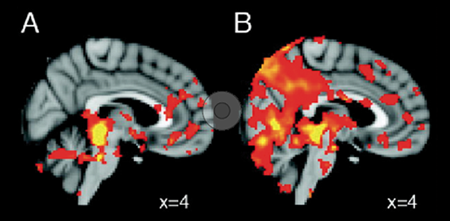Further symptoms in Parkinson's disease, requiring clinical trials to establish level A evidence with botulinum toxins are constipation, laryngeal dystonia, freezing of gait, camptocormia, and oral mandibular dystonia, he emphasised.
Blepharospasm & eyelid apraxia
In blepharospasms and eyelid apraxia, more common in advanced states of the disease and in atypical Parkinsonism, botulinum toxins are recommended as first-line treatment: onabotulinum and incobotulinum toxin A have level A evidence, abobotulinum toxin A has level B evidence, and rimabotulinum toxin B has level U evidence.
Achalasia, Barrett’s oesophagus
Dysphagia is also a well-recognised problem in patients with Parkinson's disease. Numerous theories for its aetiology exist, including abnormal neck posture, achalasia, impairment of motor nucleus of Vagus, Lewy bodies in myenteric plexus oesophagus, as well as Barrett’s oesophagus. A total of 36% of symptomatic Parkinson patients are affected. In asymptomatic Parkinson's disease, 15-20% of the patients suffer from dysphagia. Oral and pharyngeal phases are prolonged and multiple attempts to swallow occur. Dr Pagan was convinced that Barrett's oesophagus as well as achalasia are both areas where botulinum toxin could be directly injected into the oesophagus with effects lasting for about 6 months depending on the patient.
Cervical dystonia - level A evidence for all botulinum toxins
Neck and shoulder pain is present in up to 70% of the patients with Parkinson's disease. Dr Pagan pointed out that painful dystonia in Parkinson's disease may affect various areas of the body. Parkinson patients may suffer, for example, from cervical dystonia which can be easily missed. Anterocollis is the most common pattern of cervical dystonia in Parkinsonism, he explained. In cervical dystonia, Dr Pagan emphasised that all botulinum toxins have level A evidence for treatment.
Limb dystonia - unmet need
Patients may also be affected by limb dystonia, which manifests as upper limb dystonia in hand, arm, or shoulder. When lower limbs are affected, toe cramping, foot inversion, and toe extension in 10% of the patients may be observed. Dr Pagan pointed out that for limb dystonia in Parkinson's disease, botulinum toxins do not have level A evidence for treatment, but they improve quality of life for the patients. Further studies are needed, he urged, because an FDA indication is desperately needed.
Overactive bladder - level A evidence
Bladder dysfunction is also common in patients suffering from Parkinson's disease. Nocturia has been reported in up to 60% of the patients. In Parkinson's disease, detrusor overactivity is the main reason for this problem. Dr Pagan pointed out that botulinum toxin therapy (level A evidence) has shown to increase capacity and improve urgency.
Posted on
Previous Article
« Daxibotulinum toxin in isolated cervical dystonia Next Article
New Versions of Botulinum Toxins »
« Daxibotulinum toxin in isolated cervical dystonia Next Article
New Versions of Botulinum Toxins »
Table of Contents: TOXINS 2019
Featured articles
Pain
Pain subsides before effect on muscles become apparent
Migraine
Central and peripheral mechanisms in migraine
Predictors of response
Spasticity
Why treat spasticity?
ASPIRE: High patient and clinician satisfaction
Cervical Dystonia
Anterocollis posture and deep cervical muscle injections
Daxibotulinum toxin in isolated cervical dystonia
Parkinson
Utility of botulinum toxin in Parkinson’s disease beyond sialorrhea
New Versions of Botulinum Toxins
New Versions of Botulinum Toxins
Related Articles
March 15, 2019
Tremor

March 15, 2019
Central and peripheral mechanisms in migraine

March 15, 2019
Sialorrhea
© 2024 Medicom Medical Publishers. All rights reserved. Terms and Conditions | Privacy Policy
HEAD OFFICE
Laarderhoogtweg 25
1101 EB Amsterdam
The Netherlands
T: +31 85 4012 560
E: publishers@medicom-publishers.com

